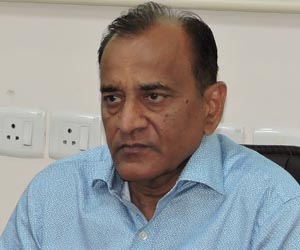Earlier this month, the Union Government made an important intervention to ease agrarian distress across the country. The Cabinet announced an increase in the minimum support prices (MSP) for 14 crops ahead of the Kharif season, which works out to a not less than 150 per cent of the cost of cultivation to farmers. The MSP for paddy, which is the Kharif season’s main crop, was enhanced by around 12 per cent while that of bajra will offer a return of more than 96 per cent. The return over costs would now be over 50 per cent over input costs— a promise that the Bharatiya Janata Party-led NDA regime had made months ago and has fulfilled ahead of the 2019 Lok Sabha election.
Experts have pointed out that a higher MSP is not a panacea for the farming crisis, and that other related issues too need to be resolved. They are right, of course. The agrarian problem is a mix of challenges other than the MSP — such as irrigation bottlenecks, inaccessibility of affordable technology to boost cultivation, and failure of the formal banking system to come to the aid of farmers, thus pushing them into the arms of high interest-charging moneylenders. Critics have also said that too high a MSP on traditional crops can be counter-productive, since it could lead to a spike in inflation (thereby increasing the cost of production in the farming sector and hurting the farmers), discourage cultivators from diversifying into cash crops, and even cause a glut in the market of products that promise high MSPs. These are valid apprehensions. The bonanza now announced is expected to make a Rs 15,000 crore hole in the Government’s pocket. But the fears can be dissolved through effective implementation and sound financial planning.
There is also another criticism — not that the MSP has been raised high, but that it has not been raised high enough. Various farmer organisations have said that the announcement has fallen short of the recommendations the MS Swaminathan panel had made. While the committee had suggested that the MSP must take into account the input value on owned land rentals and interest on capital (the C-2 measure), the Government has stuck to the A2+FL system which considers indices like the cost of inputs such as seed, fertiliser, hired human and animal labour, land revenue and irrigation charges etc — practically everything except the ones that the C-2 system recommended.
Nonetheless, the significance of the increase cannot be brushed aside. The 50 per cent return over the A2+FL costs is a first for this Government. The incentivising is certain to have a positive impact on the farmer’s income. The MSP has a direct bearing on two critical factors: the buffer stock the Government holds, and the public distribution system (PDS). A realistic MSP encourages farmers to enhance their production, and this in turn helps the Government to procure the MSP-linked crops in adequate measure to satiate both these factors. There are occasions when the Government procures produce at a rate higher than the MSP (but lower than the open market price), to meet exceptional circumstances, and that procurement price too gets a boost — which helps the farmers — when the MSP is high. Moreover, the revised MSP can contribute in some measure to the Centre’s resolve to double farmers’ income by 2022, though it will require more than a good MSP to meet that goal.
Meanwhile, the success of the MSP intervention is dependent on the effective governance of the system. In January 2016, NITI Aayog had presented a report titled, ‘Evaluation Study on Efficacy of Minimum Support Prices (MSP) on Farmers’. The exhaustive study covered a broad range of topics including objectives and methodology, implementation process, policy effectiveness, MSP’s impact, and monitoring of the scheme. Some of the findings and suggestions are critical to the success of the Government’s latest intervention. While the report had made use of the then latest available data (for the year 2010-11), the ground situation is not very different today, at least terms of statistical material.
The report concluded that while a high 81 per cent of the farmers were aware of the MSP fixed for different crops, only 10 per cent of them got to know of it before the sowing season. On the other hand, 62 per cent found out about the MSP after the sowing season. What should make the Government sit up and take notice is that a mere seven per cent of the cultivators came to know of the MSP through State regime officials, and 11 per cent from the Food Corporation of India. Most of the information percolated down from “knowledgeable persons” such as the village headman, the sarpanch, the school teacher, and the gram sewak. Clearly, there is scope still for the official administration to promote the MSP concept.
The lack of presence of the official machinery is also evident in the medium of sale of the produce. According to the report’s findings, 67 per cent of the farmers sold their produce through individual arrangements, while 21 per cent used the services of a broker. While the first can frustrate the farmer, the second results in an income loss since a percentage is taken by the broker. The share of sales through Government agencies was a mere four per cent.
The time consumed in receiving the MSP payments is also a cause of concern. According to the report, 51 per cent of farmers received the amount after a week but within a month of the sales; only 20 per cent of the cultivators received payments either on the spot or on the day of sale. By Government standards, issuing payments within a month of sales seems like an achievement, but for the farmer who struggles to make both ends meet, it can be a case of being too little and too late.
But there is one heartening aspect in the report. The study showed that 78 per cent of the cultivators had adopted “improved methods of farming” to ensure for themselves the fullest benefit of the MSP regime. They had taken to using high-yielding varieties of seeds, organic manure, chemical fertilisers, pesticides and better methods of harvesting etc. If this trend were to hold, then the latest round of increase in the MSP should further encourage farmers to adopt newer technologies — assuming, of course, that such technologies are not only accessible but also affordable.
Finally, it’s not just the MSP but also other facilities that must be primarily targeted at the small and marginal farmers who are in need of assistance the most. According to the NITI Aayog report, while small farmers who constituted 65 per cent of total farming households earned 60 per cent of their annual income from agriculture, the larger farmers who formed just 16 per cent of the cultivating community, received as much as 74 per cent of their annual income from farming. The wide gap itself presents a strong case for focus on the numerically larger but financially weaker section of the agricultural sector.
(The writer is a senior political commentator and public affairs analyst.)
(The paper is the author’s individual scholastic articulation. The author certifies that the article/paper is original in content, unpublished and it has not been submitted for publication/web upload elsewhere, and that the facts and figures quoted are duly referenced, as needed, and are believed to be correct). (The paper does not necessarily represent the organisational stance... More >>
Image Source: https://upload.wikimedia.org/wikipedia/commons/f/f1/%281%29_Agriculture_and_rural_farms_of_India.jpg

_Agriculture_and_rural_farms_of_India.jpg)









Post new comment